In art history, “Leonardesque” painters are defined as those painters who studied together with Leonardo da Vinci (Vinci, 1452 - Amboise, 1519) or whose art looked to that of the great Tuscan genius. They were a group of artists active in Milan (where Leonardo spent the longest period of his artistic career: seventeen years, from 1482 to 1499) and, more generally, in Lombardy, and who spread his language throughout the region and northern Italy. The Leonardeschi included such sure direct pupils of Leonardo as Francesco Melzi, Gian Giacomo Caprotti known as the Salaì (more on this artist here), Giovanni Ambrogio de Predis, Marco d’Oggiono, and Giovanni Antonio Boltraffio; artists whose training we have little information about, but who we can assume were part of Leonardo’s circle, such as Cesare da Sesto, Giovan Pietro Rizzoli called the Giampietrino and Francesco Galli called the Napoletano; artists who, although they were not Leonardo’s pupils, were deeply influenced by his style, such as Bernardino Luini, Andrea Solari, Giovanni Agostino da Lodi.
Many of the most interesting masterpieces of the Leonardeschi are concentrated in and around Milan: for this new article in our “Five places to visit in two days” format, we suggest five museums in the Lombard capital where it is possible to admire some of the main works of the Leonardeschi in order to have firsthand experience of their art, to understand how this group was formed, what characteristics separated the pupils from the master, and the artists of the circle from their colleagues. To visit, as always, in the space of a weekend! Of course, this is not an exhaustive and complete itinerary, because there are also other museums (as well as churches and palaces, of course) where one can admire works no less important than the Leonardeschi. But for this episode we focus on the museums, and we will still get to see other places that hold their masterpieces.
The Castello Sforzesco is one of only three places in Milan where Leonardo da Vinci’s paintings are still preserved: in fact, the decorations of the Sala delle Asse are located here(at this link an in-depth study, here instead an article on the restoration completed in 2019), while the other two are the refectory of Santa Maria delle Grazie where theLast Supper can be admired and the Pinacoteca Ambrosiana, which instead preserves the Ritratto di musico. The Pinacoteca del Castello Sforzesco also houses some of the most interesting works by the Leonardeschi: among these, Marco d’Oggiono’s Madonna and Child, St. John and the Angel by Marco d’Oggiono, a replica, in more subdued tones, of Leonardo’s Virgin of the Rocks, should certainly be mentioned. Also, a fine Magdalene by Giampietrino, the Marriage at Cana by Marco d’Oggiono, a female portrait by Andrea Solario, and even some roundels by the elusive Master of the Pala Sforzesca, a Leonardo for whom no name has yet been found.
 |
| Marco d’Oggiono, Madonna and Child, St. John and the Angel (c. 1510; tempera and oil on panel, 54 x 48.5 cm; Milan, Castello Sforzesco) |
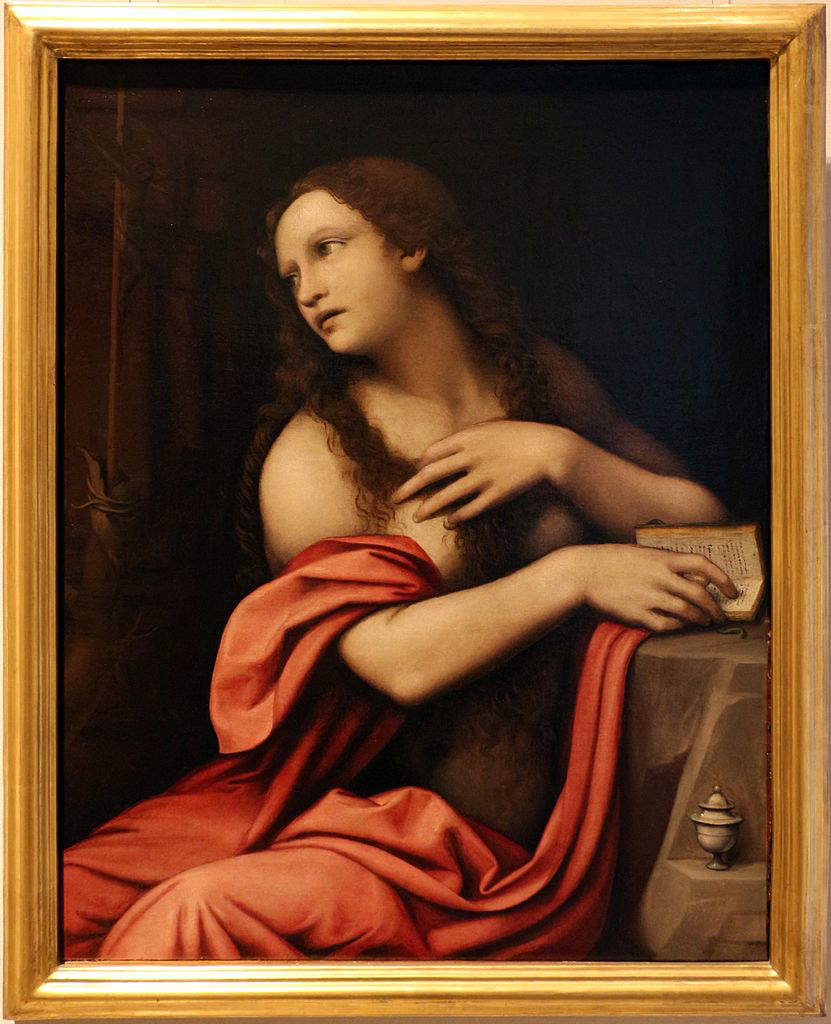 |
| Giovan Pietro Rizzoli known as Giampietrino, Magdalene (c. 1520-1530; oil on panel transported on canvas, 57.5 x 73.5 cm; Milan, Castello Sforzesco). Ph. Francesco Bini |
As already mentioned, the Pinacoteca Ambrosiana preserves one of the rare paintings by Leonardo da Vinci still in Milan (as well as the only movable painting), namely the Ritratto di musico, but the museum that was formed from the collection of Federico Borromeo houses many important paintings: it is in fact the place that preserves the only work that can be attributed with a good margin of certainty to Salaì, namely Christ the Redeemer, which became part of the museum’s collection very recently, in 2016, following a donation (and also to Salaì is traditionally attributed a Saint John the Baptist for which, however, the most recent orientations of critics are inclined to formulate the hypothesis of an unknown Leonardo). The Pinacoteca also preserves several works by Bernardino Luini, including the famous Sacra Famiglia con sant’Anna e san Giovannino that belonged to Cardinal Borromeo and which, like many works in the Ambrosiana, was requisitioned by Napoleon’s troops and taken to France, only to return in 1815 (to learn about Luini’s work, a visit to the Ambrosiana is essential). Also present is a Portrait of a Lady by De Predis.
 |
| Gian Giacomo Caprotti known as Salaì, Head of Christ the Redeemer (1511; oil on panel, 57.5 x 37.5 cm; Milan, Pinacoteca Ambrosiana) |
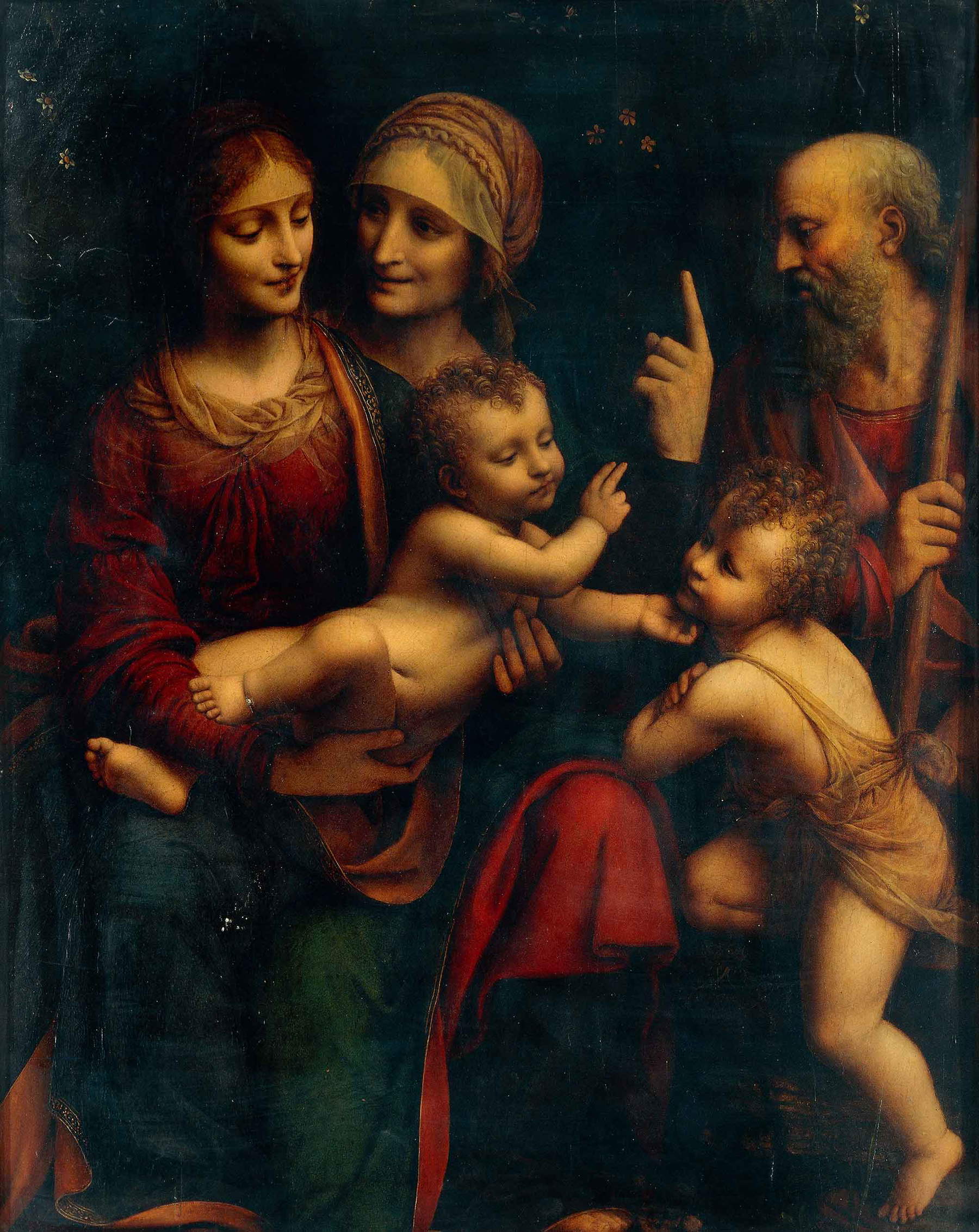 |
| Bernardino Luini, Holy Family with St. Anne and St. John (c. 1520-1530; tempera and oil on panel, 118 x 192 cm; Milan, Pinacoteca Ambrosiana) |
The Pinacoteca di Brera, in addition to being one of Italy’s major museums, is also a true temple of Leonardo’s painting, because almost all the artists who looked to Leonardo are represented here, and moreover, all of them with outstanding works. One of the most spectacular passages in the museum concerns a Leonardo: it is the room where the detached frescoes that Bernardino Luini executed for the chapel of the Nativity of the Virgin in the church of Santa Maria della Pace in Milan are displayed. Room XI of the Pinacoteca also exhibits the Pala Sforzesca from which critics have formulated the name Maestro della Pala Sforzesca to indicate its unknown author. And then again, among the masterpieces of the Leonardeschi preserved in Brera, Giovanni Andrea Boltraffio’s Madonna of the Carnations, Marco d’Oggiono’s Three Archangels, Cesare da Sesto’s Madonna of the Tree, Bernardino Luini’s Madonna of the Rose Garden, Giampietrino’s Madonna and Child, Francesco Galli’s Madonna and Child, and Marco d’Oggiono and Giovanni Agostino da Lodi’s Baptism of Christ should certainly be mentioned. In short: they are practically all there.
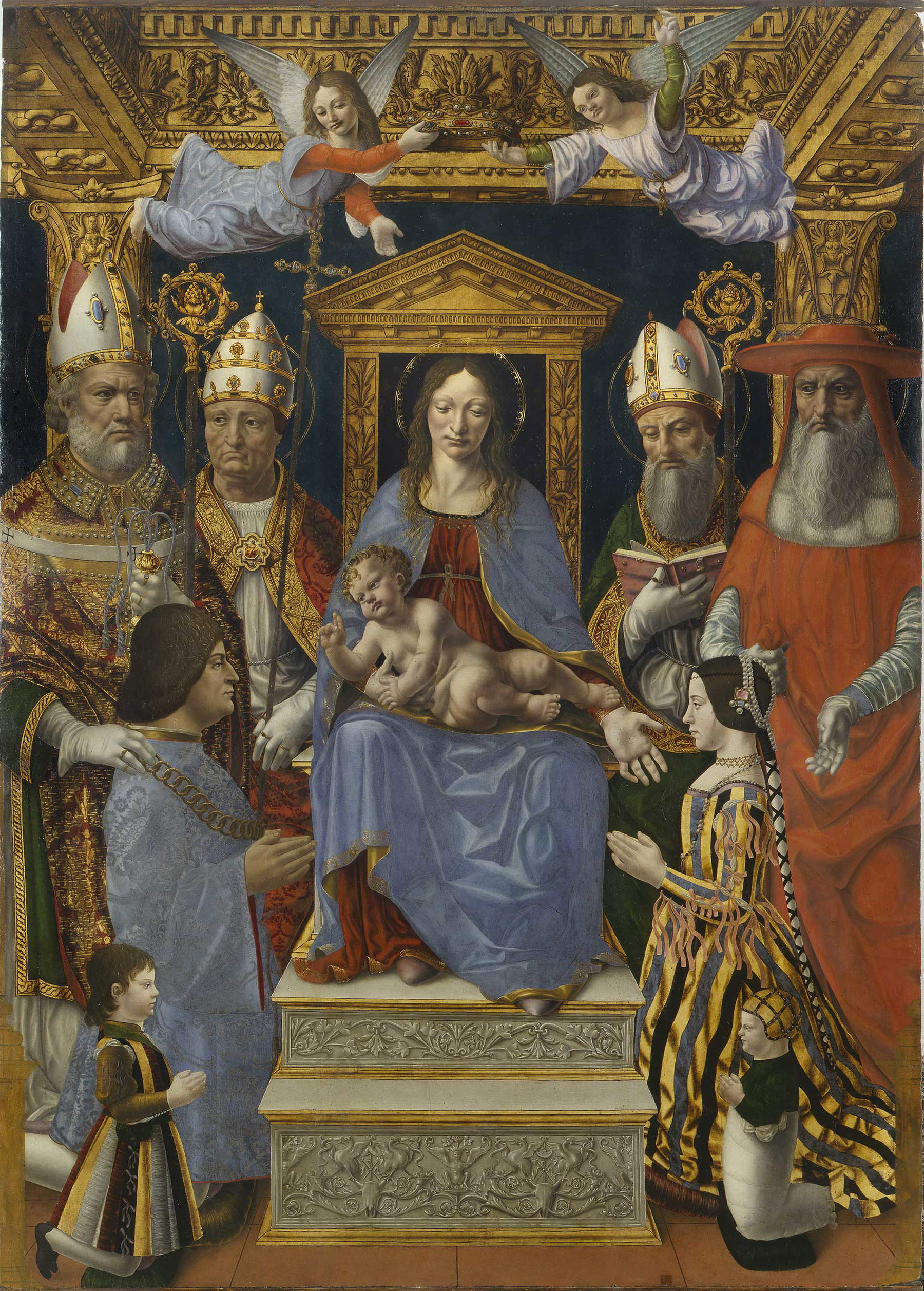 |
| Maestro della Pala Sforzesca, Sforzesca Altarpiece (1494-1495; tempera and oil on panel, 230 x 165 cm; Milan, Pinacoteca di Brera, inv. 451) |
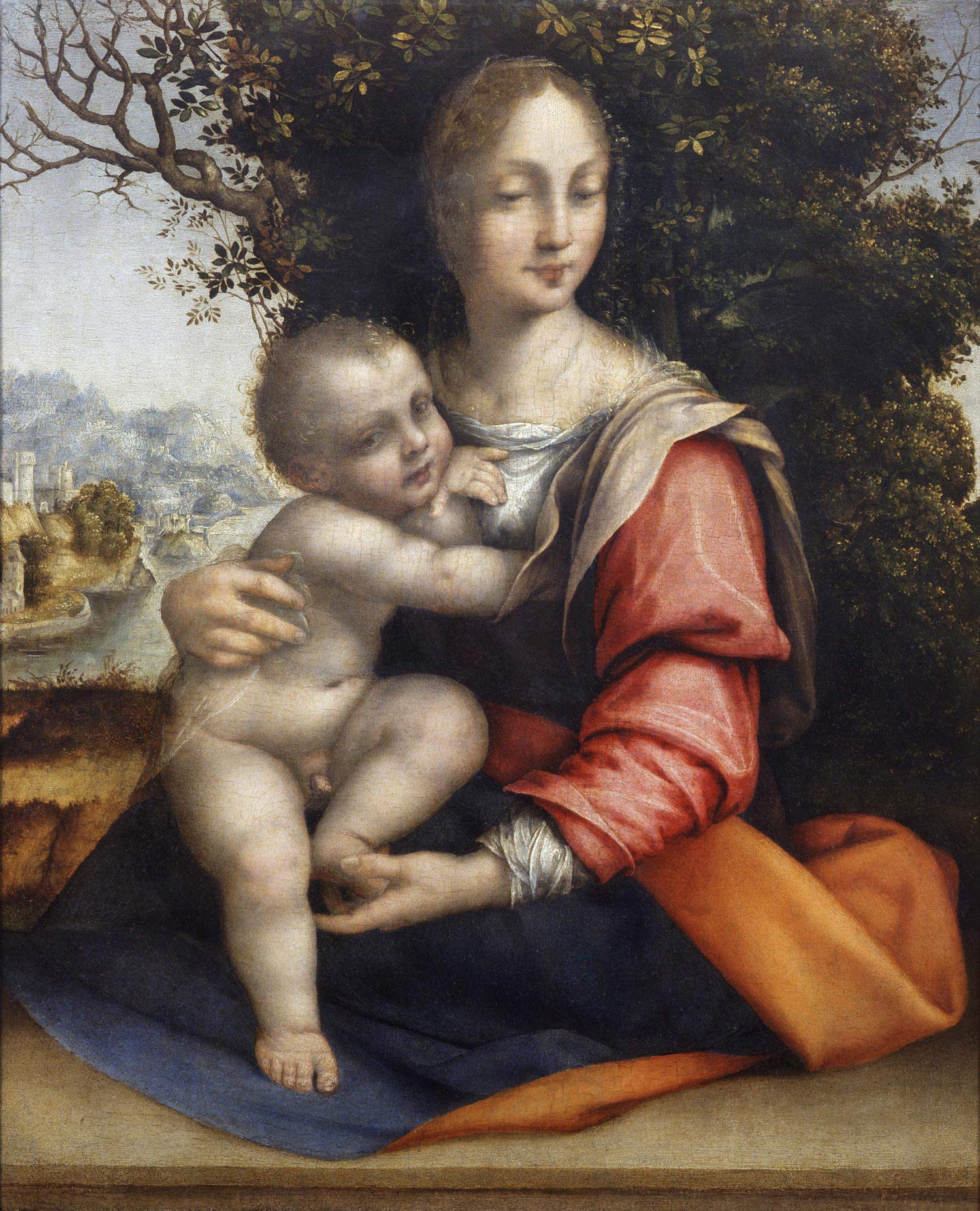 |
| Cesare da Sesto, Madonna dell’Albero (1512-1520; oil on panel, 46 x 36 cm; Milan, Pinacoteca di Brera, inv. 326) |
 |
| Marco d’Oggiono, The Three Archangels (1516; oil on panel, 255 x 190 cm; Milan, Pinacoteca di Brera, inv. 447) |
The Poldi Pezzoli Museum also preserves a conspicuous Leonardo nucleus, but that’s not all: in fact, the via Manzoni institution also holds several Renaissance textiles with Sforza exploits (although for conservation reasons they are not always displayed), as well as goldsmithing from the period. In short, a visit to the Poldi Pezzoli is important to know the context of the Sforza court, in which all the artists of Leonardo da Vinci’s circle worked for a long time. Still, the Poldi Pezzoli also has what is perhaps very direct evidence of Leonardo’s workshop, a small bronze depicting a Warrior with Shield that scholars think may be a sketch for the equestrian monument to Francesco Sforza that was commissioned from Leonardo by Ludovico il Moro (the genius, however, abandoned the project). Finally, there are some very significant paintings in the museum: the Madonna and Child by Giovanni Antonio Boltraffio, an Icosidodecahedron by Giampietrino, and Andrea Solario’sEcce Homo.
 |
| Andrea Solari, Ecce Homo (1515; tempera and oil on panel, 43 x 33 cm; Milan, Museo Poldi Pezzoli, inv. 1647) |
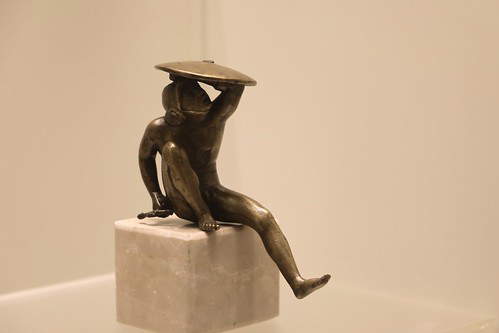 |
| Workshop of Leonardo da Vinci (?), Warrior with Shield (c. 1490; bronze, height 13.2 cm; Milan, Museo Poldi Pezzoli, inv. F.C. 77/68) |
Visiting the Diocesan Museum in Milan means getting an idea of the works of the Leonardesque painters who populated the city’s churches. In particular, the institute in Piazza Sant’Eustorgio holds two very interesting paintings: the first is one of Giampietrino’s works closest to Leonardo da Vinci. It is the Christ Carrying the Cross, a work that Giovan Pietro Rizzoli made based on a model by the master, documented by a drawing from around 1490 preserved in the Gallerie dell’Accademia in Venice (Giampietrino’s work, on the other hand, is from the 1620s, dating from a period when he began to study the master’s works with new vigor). The second is instead an altarpiece from the last phase of Marco d’Oggiono’s activity, the Madonna Enthroned with Child, Saint Jerome, Saint Bernardine of Siena and Saint John of Capestrano, which the artist executed with the example of the Virgin of the Rocks in mind.
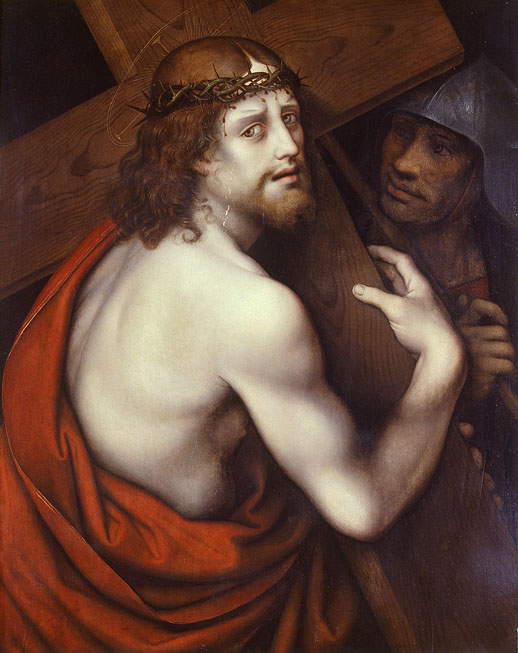 |
| Giovan Pietro Rizzoli known as Giampietrino, Christ Carrying the Cross (c. 1520; oil on panel, 74 x 59 cm; Milan, Museo Diocesano) |
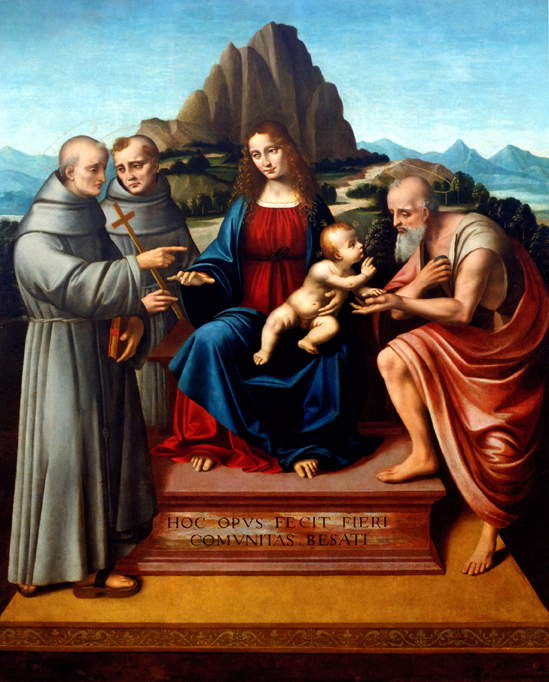 |
| Marco dOggiono, Madonna Enthroned with Child, Saint Jerome, Saint Bernardine of Siena and Saint John of Capestrano (c. 1524; oil on canvas originally on panel, 177 x150 cm; Milan, Museo Diocesano) |
 |
| The Leonardeschi: five museums in Milan to learn about their masterpieces |
Warning: the translation into English of the original Italian article was created using automatic tools. We undertake to review all articles, but we do not guarantee the total absence of inaccuracies in the translation due to the program. You can find the original by clicking on the ITA button. If you find any mistake,please contact us.